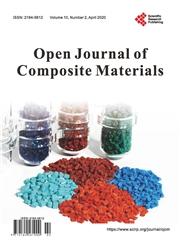Synthesis and Fabrication of Graphene and Graphene Oxide: A Review
引用次数: 88
Abstract
The field of nanotechnology has advanced following the discovery of a two-dimensional material of sp2 hybridized carbon atoms, graphene in 2004 by Geim and Novoselov. Graphene has received so much attention due to its exceptional electronic, thermal, mechanical, and optical properties in addition to its large surface area and single-atom thickness. This has led to the discovery of several techniques to obtain graphene such as chemical exfoliation, chemical vapor deposition (CVD), chemical synthesis etc. However, these techniques are majorly challenged with developing graphene with fewer defects and in large scale; thus, there is an increasing need to produce graphene in large quantities with high quality. Several studies have been carried out to find routes to producing high-quality graphene. This paper focuses majorly on the synthesis and fabrication methods of producing graphene and its derivative, graphene oxide. Characterization techniques to identify graphene such as optical microscopy, scanning electron microscopy (SEM), Raman spectroscopy, scanning probe microscopy (SPM) used to determine number of layers, quality, atomic structures, and defects in graphene is also briefly discussed. This article also covers a short description of graphene applications in transparent electrodes, composites and energy storage devices.石墨烯和氧化石墨烯的合成与制备综述
2004年,Geim和Novoselov发现了sp2杂化碳原子的二维材料石墨烯后,纳米技术领域取得了进展。石墨烯除了具有较大的表面积和单原子厚度外,还具有特殊的电子、热、机械和光学性能,因此受到了广泛的关注。这导致了几种获得石墨烯的技术的发现,如化学剥落、化学气相沉积(CVD)、化学合成等。然而,这些技术面临的主要挑战是开发缺陷更少、规模更大的石墨烯;因此,越来越需要大量生产高质量的石墨烯。为了找到生产高质量石墨烯的途径,已经进行了几项研究。本文主要介绍了石墨烯及其衍生物氧化石墨烯的合成和制备方法。还简要讨论了用于鉴定石墨烯的表征技术,如光学显微镜,扫描电子显微镜(SEM),拉曼光谱,扫描探针显微镜(SPM),用于确定石墨烯的层数,质量,原子结构和缺陷。本文还简要介绍了石墨烯在透明电极、复合材料和储能器件中的应用。
本文章由计算机程序翻译,如有差异,请以英文原文为准。
求助全文
约1分钟内获得全文
求助全文

 求助内容:
求助内容: 应助结果提醒方式:
应助结果提醒方式:


